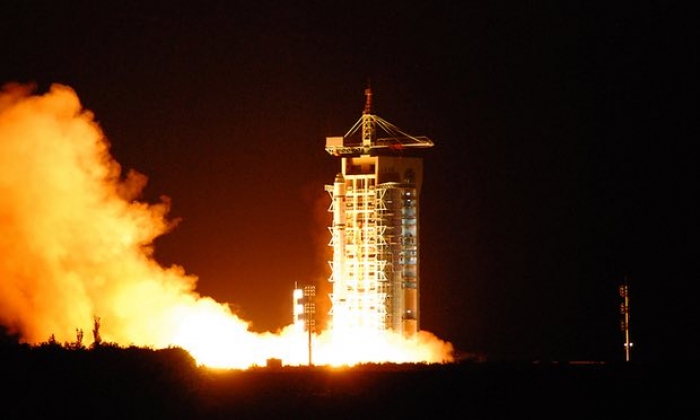Researchers believe that by linking particles together in this way, encrypted information could be sent from place to place across a quantum network with no danger of it being decrypted and read by others, as can be done on the existing internet.
Jian-Wei Pan, who led the research at the University of Science and Technology in Hefei in China, said the demonstration was a moment he had been dreaming of since 2003. “Many people thought it was a crazy idea, because it was very challenging,” he said.
The work obliterates the previous world record for sending pairs of photons that are connected to one another by a strange rule of quantum physics first spotted by Einstein. Until now, the farthest researchers had ever sent entangled photons stood at a mere 65 miles, less than one tenth of the distance achieved in the satellite experiment.
“It’s a first step, and a major step, toward creating a global quantum network,” said Pan. “All the previous methods are limited to about 100km so can only work within a city.”
The experiment relied on the world’s first quantum-enabled spacecraft: a Chinese satellite called Micius. As it soared over China, the satellite created pairs of photons with properties that were linked through quantum entanglement. It then beamed these simultaneously to ground stations in Delingha, Lijiang and Nanshan. Each pair of particles travelled up to 1,240 miles before they reached their destinations. Details of the study are published in Science.
Pan said that the kind of cryptography used to keep data safe today relies on complex mathematics which can often be defeated by hackers. “If a future quantum network is established, the security is ensured by the laws of physics, which are unconditionally secure,” he said. “It will be beneficial for all human beings.”
Martin Stevens, a physicist at the National Institute of Standards and Technology in Boulder, Colorado, said he was impressed with the work. “These types of experiments are not easy to do, even within the controlled confines of a laboratory environment. Doing them between two remote ground locations and a satellite flying overhead at a speed of thousands of kilometres per hour is mind-bogglingly difficult.”
In 2015, Stevens sent entangled photons down a 65 mile length of optical fibre. That is good enough for quantum communications between neighbouring towns, but it cannot work for much greater distances, because the signal is gradually lost the more optic fibre it travels down. The advantage of using a satellite is that the particles of light travel through space for much of their journey.
Anton Zeilinger at the Vienna Centre for Quantum Science also praised the work. “It’s an important step towards a worldwide quantum network. If you envisage a quantum network, the question is how to cover large distances and that cannot be done with glass fibres on the ground. You have to go into space, because in glass fibres you lose the signal. It’s very important to show that it works with satellites, so I’m very excited by this.”
Zeilinger is working with Pan on an intercontinental quantum network and hopes to have results to report before the end of the year.
More about:
















































